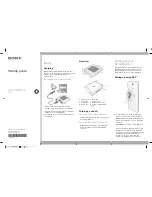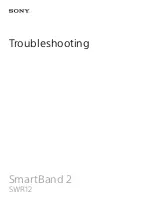
4
5
• Do not place sharp metal objects, such as pins, near the microphone. The microphone may attract these
objects and result in injury.
• Wireless devices may interfere with the airplane's flight system. Do not use your device where wireless devices
are not allowed according to the airplane company's regulations.
• To ensure the best audio performance of your device's microphone, use a cloth to wipe the area of the
microphone which has been exposed to water. Do not use the microphone until the wet areas are totally dry.
• Switch off your wireless device whenever you are instructed to do so by airport or airline staff. Consult the
airline staff about the use of wireless devices on board the aircraft, if your device offers a ‘flight mode’ this must
be enabled prior to boarding an aircraft.
• Ensure that the power adapter meets the requirements of Clause 2.5 in IEC60950-1/EN60950-1/UL60950-1
and has been tested and approved according to national or local standards.
• Protect the wearable and its accessories from strong impact, strong vibration, scratches, and sharp objects,
these may damage the device.
• Make sure that the wearable and its accessories stay clean and dry. Do not wear the wearable too loosely
or tightly during workouts. Clean your wrist and device after the workout. Rinse and dry the device to clean it
before putting it back on.
• If the wearable is built for swimming and showering, make sure to regularly clean the strap, dry your wrist and
the device before wearing it again.
• Loosen the strap for a little bit during the day to let your skin breathe. If wearing it starts to feel uncomfortable,
take off your wearable and let your wrist have a rest. If it still feels uncomfortable, stop wearing it and seek
medical advice as soon as possible. You can also purchase straps made from other materials and with different
designs from the official Huawei website.
Disposal and recycling information
The crossed-out wheeled-bin symbol on your product, battery, literature or packaging reminds you that
all electronic products and batteries must be taken to separate waste collection points at the end of their
working lives; they must not be disposed of in the normal waste stream with household garbage. It is the
responsibility of the user to dispose of the equipment using a designated collection point or service for
separate recycling of waste electrical and electronic equipment (WEEE) and batteries according to local







































